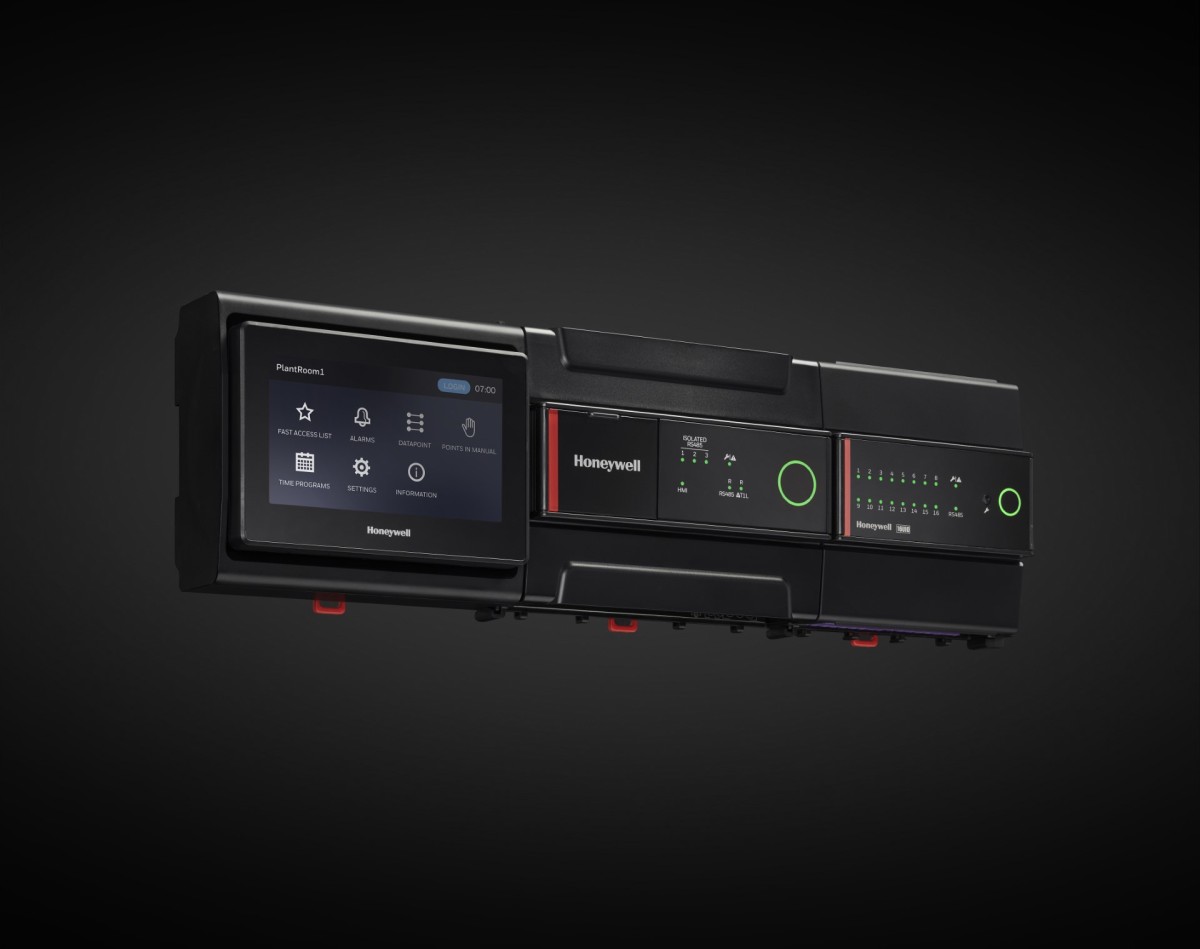Honeywell has launched Advance Control for Buildings, a groundbreaking platform marking one of the company’s most substantial leaps in building controls innovation to date.
Designed to automate building management and provide the foundation for a building’s energy efficiency strategy, Advance Control combines the latest technologies with decades of innovation and domain expertise. Automation and machine learning fuel a streamlined operation system featuring built-in cybersecurity and technology to deliver faster network speeds that, in an industry first, uses existing wiring. This announcement further supports Honeywell’s recently announced plans to realign its business with three compelling megatrends, including automation and energy transition.
“Today, buildings are facing mounting pressures around safety, operational efficiency and energy efficiency. By pushing the boundaries of technological advancement, Advance Control not only helps building managers optimise their building operations to meet these pressures, but also champions innovation,” said Steve Kenny, vice president and general manager, Honeywell Building Management Systems. “Automation breaks down operational barriers to give building managers more control over the efficiency of their buildings, ultimately helping improve the occupant experience while advancing energy management goals.”
As part of this rollout, Honeywell recently announced strategic alliances with two semiconductor leaders, NXP® Semiconductors N.V. (NASDAQ: NXPI) and Analog Devices, Inc. (NASDAQ: ADI) to streamline the transition to intelligent edge processing. With NXP, Honeywell seeks to elevate machine learning and autonomous decision-making for enhanced energy management and convenience, as well as enhanced security within and beyond the building. The joint efforts with ADI aim to deliver more efficiency and increased intelligence through digital connectivity and advanced signal conversion across many industrial applications.
“As the building automation market demands greater digital connectivity and security enabling data driven efficiencies, ADI has invested in new technologies meeting these needs while also offering flexibility for future upgrades. Our single-pair Ethernet (T1L) enables the possibility of reusing a building’s existing wiring, helping to reduce installation time, cost, and waste. ADI is pleased to work with Honeywell to bring this new technology to building management systems for the first time in Advance Control for Buildings,” said Diarmuid McSwiney, Managing Director, Industrial Connectivity and Control at ADI.
“Security resilience is increasingly required for networked control systems,” said Rafael Sotomayor, Executive Vice President and General Manager, Secure Connected Edge, NXP Semiconductors. “Honeywell’s Advance Control for Buildings platform leverages NXP processors that efficiently combine machine learning with advanced security technologies to protect sensitive building automation infrastructure.”
According to the UN Environment Programme, buildings account for 37% of global CO2 emissions[i], resulting in increasing pressure to identify and reduce energy use. At the same time, the lack of skilled labour makes it difficult for building owners to find technicians to upkeep and modernise spaces.
“Real estate and facilities leaders are placing top priority on optimising building operations,” said Sandy Rogers, a principal analyst with Verdantix, a research and advisory firm. “Organisations require greater visibility and automated control across their building portfolios, and they will increasingly look to digital innovations such as AI and machine learning for added intelligence.”





